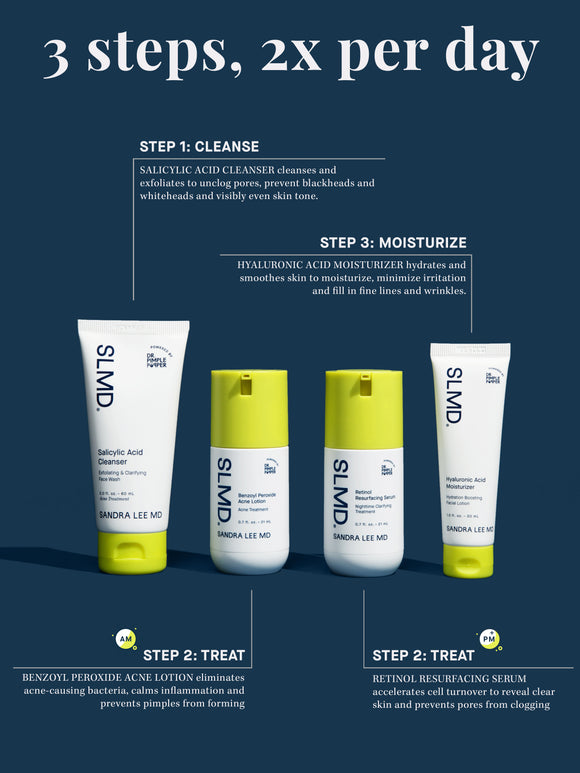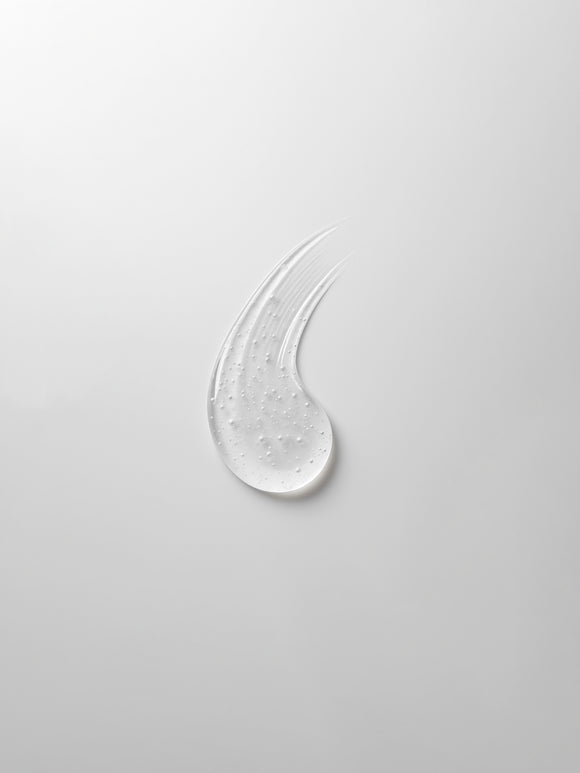
Minimalist Skincare: Dr. Pimple Popper on Why Less Is More
When it comes to skincare products, quality always wins over quantity.
Published:
2 minute read
In skincare, one question never seems to fade: how many steps do you really need? Some routines include ten products, while others rely on just three. To cut through the confusion, dermatologist and SLMD founder Sandra Lee, MD (aka Dr. Pimple Popper) explains why minimalist skincare — or skinimalism — may be the smartest way to keep your skin clear, calm, and consistent.
Fast Facts: Minimalist Skincare Routine
- Most skin types do best with three steps: cleanse, treat, moisturize.
- Skinimalism is about doing less — but doing it right.
- Add new products only for a specific concern, one change at a time.
- Prioritize multitasking, dermatologist-developed formulas over trendy extras.
Are 10-step skincare routines really necessary?
Dr. Lee: The first rule is to listen to your skin — what is it trying to tell you? If you have acne or another concern, start with a few targeted products, twice daily. Adding too many steps can backfire: ingredients may interfere with each other or cause irritation.
Trends come and go, but I’ve always believed in quality over quantity. Focus on effective, dermatologist-developed formulas and do the minimum needed for your skin type — consistently. A viral product doesn’t automatically belong in your regimen.
The essential steps in a minimalist skincare routine
Dr. Lee: Every healthy regimen, minimalist or not, comes down to three non-negotiables: cleanse, treat, moisturize.
Cleanse : Remove pollutants, oil (aka sebum), and buildup. If you’re acne-prone, choose a cleanser with a gentle chemical exfoliant like salicylic acid. Wash twice daily, and add a cleanse after heavy sweat or mask wear.
Treat: Target specific issues (like acne or premature aging) with proven actives such as retinol, AHAs, or antioxidants like vitamin C. Keep this simple — one or two actives at a time is plenty.
Moisturize: Don’t skip it. Even oily skin needs hydration to support the barrier and prevent transepidermal water loss. In the morning, finish with SPF or use a moisturizer-sunscreen hybrid.
Your skin needs consistency, not complexity. That’s the foundation of healthy, balanced skin.
Dr. Pimple Popper's Essential Skincare Picks
When to add steps to your minimalist skincare routine
Dr. Lee: As a skincare lover, I understand the draw of incorporating a trendy new ingredient or product into your routine. But only a handful of ingredients deliver measurable results. So before you add something new, reassess what you’re already using. Maybe your cleanser needs a mild exfoliant, or your moisturizer needs to be a bit richer.
Try alternating treatments morning vs. night rather than layering multiple actives at once. Limit “treatment” products to one or two and give each change a few weeks before judging results. That’s how you keep a minimalist skincare routine effective — without overwhelming your skin.
Building your own minimalist skincare routine
Dr. Lee: A minimalist approach isn’t about cutting corners, it’s about being deliberate. Start with the basics — cleanse, treat, and moisturize — and build slowly from there. Add one change at a time, with a clear goal, and give your skin space to adjust. The best routine is the one you can stick with.
Shopping smart for minimalist skincare
Dr. Lee: When it comes to buying skincare, think like a dermatologist. Choose brands that clearly list ingredients and are dermatologist-developed. Look for multitasking formulas, like treatment cleansers or a moisturizer with SPF, and skip redundant products. The goal is to simplify your routine while keeping it effective.

Dr. Lee's Last Word
Whether it’s three steps or ten, results come from using the right products consistently. Listen to your skin, keep it simple. and build from there only when you need to.































